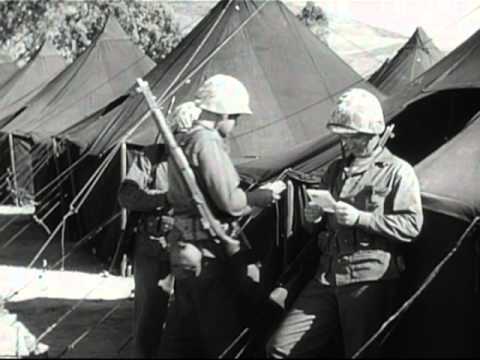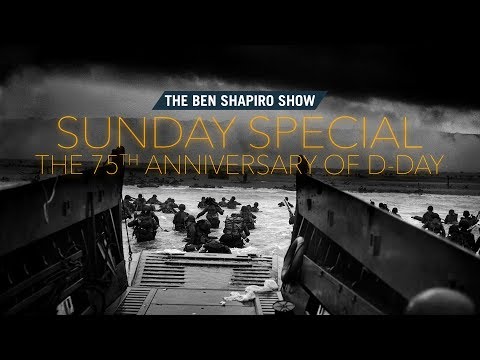Collective moments are a fascinating thing to examine.
When society fixates on something, it tells us about our internal processes and what is bothering us or drawing our curiosity. This happened in the late 1990s with the explosion in popularity of World War II movies.
Half a century after the defeat of the Nazis, filmmakers like Steven Spielberg, Terrance Mallick, Clint Eastwood and more began pumping out historical military projects like “Saving Private Ryan,” “The Thin Red Line,” “Flags of Our Fathers,” “Valkyrie,” “Pearl Harbor,” “U-517,” “Enemy At The Gates,” “Miracle at St. Anna,” “Windtalkers” and “Band of Brothers.”
This wasn’t the first time the war had been put to film. The 1940s and 1950s were filled with waves of patriotic propaganda movies that valorized the recent war, such as “Sands of Iwo Jima,” “The Longest Day” and “They Were Expendable.”

What set this WWII renaissance apart was a collective reckoning about the nature of the war itself.
Three decades ago, aging WWII veterans began to talk about their experiences openly for the first time. It was generally rare in the 1950s for veterans to talk about the war, given how much trauma and survivor’s guilt they felt.
By the early 1990s, WWII was mythologized as the great American triumph, and the descendants of the Greatest Generation wanted to hear the repressed experiences of their grandparents. Thousands of stories finally began to be told in memoirs, biographies and interviews. Many people are learning their loved ones were war heroes for the first time.
This resulted in a swath of bloody, realistic, yet still, patriotic and valorous war movies—where Americans were unreserved good guys and the horrific experiences meant something. Their sacrifices were worth it, but the bloody reality of the war intensified the movies and made them more grizzly, realistic and tragic.
Contemporary war fiction around this genre conversely proved more morally relativistic.
As Andrew Klavan argued in 2008, movies like “Redacted,” “Rendition,” “In the Valley of Elah” and “Lions for Lambs” “characterize our soldiers and government agents as rapists, madmen, murderers, torturers of the innocent or simply victims caught up in a venal and bloodthirsty American foreign policy.”

Contemporary war movies and period-piece epics like “Kingdom of Heaven” and “The Last Samurai” chafed against the idea of American cultural imperialism. They depicted America as a morally bankrupt, petty, shallow and nationalistic country run by corrupt bureaucrats and corporate contractors.
Regardless, romantic WWII entertainment remained omnipresent between 1998 and 2008, with dozens of popular video games chasing the trend like Call of Duty, Battlefield, Brothers in Arms, and Medal of Honor.
It even became popular during this time to jokingly call the History Channel the “Hitler Channel,” because of its excessive amount of WWII documentaries.
However, the increased cynicism of modern war movies was a sign of another cultural shift, partially due to the negative reaction to the War on Terror. By 2008, WWII projects were on the decline.
The History Channel was moving on from military documentaries to reality shows like “Pawn Stars.” Their last major WWII project with any media attention was “WWII in HD,” which was more a showcase for the recent transition away from standard definition television.
RELATED: DECORATED SOLDIER PICKS BEST, WORST WAR MOVIES
The year 2008 marked a curious transition in the national mood.
It was the year Barack Obama was elected president. Buchanan published his contrarian “Churchill, Hitler and The Unnecessary War,” claiming that the World Wars were partially the cause of the West’s decline. It was also the year Quentin Tarantino directed “Inglourious Basterds”—a brutal satire of how war films are used as a tool of warfare and propaganda.
Some combination of stress from the financial crash, Obama-era moral relativism and ascendant isolationism fundamentally changed the public’s desires for constant WWII entertainment. Maybe people felt it was backward-looking or stale or merely had their minds on the present.
As a result, the tone of the genre changed.
“The Pacific,” “Red Tails,” “Fury,” “Midway,” “Hacksaw Ridge,” “Dunkirk,” “Greyhound” and “Masters of the Air” all felt more detached, less passionate, or more cynical than their predecessors. The sweeping orchestras and valor of prior WWII projects were replaced with reflections on the horror of death and the meaninglessness of war.

At the very least, they were no longer part of a cultural moment. The video games were even shifting away from WWII toward modern settings.
People were moving on to the next thing.
World War II remains a massive subject among the populace, as a conflict as large and traumatic as the Second World War can’t help but stay on people’s minds. In June 2019, we celebrated the 75th anniversary of D-Day, and it naturally brought the few remaining WWII veterans out of retirement for a rightful moment of celebration.

Still, our cultural attitudes toward war have changed. Conservatives are becoming more isolationist and skeptical of war, with many having come around to sharing Buchanan’s unromantic view.
On the left side of the aisle, the war has been nominally re-mythologized by the Antifa movement, if only because they see themselves as modern soldiers running off to gleefully kill Nazis.
RELATED: YOUR COMPLETE GUIDE TO THE BEST WORLD WAR I MOVIES
The shift still marks a notable change. Older war films’ themes can often be reduced to “America Good,” while nowadays the sentiment has shifted to “Nazis bad.” That might not seem sizable, but it marks a startling difference in viewer’s motivations.
Most modern WWII movies—particularly foreign language and arthouse films—are reflections on the nature of fascism, anti-semitism and the complicity of the societies that enable evil. We see this in films like “The Zone of Interest,” “Never Look Away,” “Bardejov,” “Son of Saul,” “The Captain” and “A Hidden Life.”
War dramas also continue to be popular, with films like “Oppenheimer,” “Operation Mincemeat,” “Imitation Game” and “Allied” finding sizable audiences; exploring the messy morally questionable underbelly of technocracy and espionage—a further curiosity for modern people’s moral relativism.
Often when WWII is explored nowadays, it is in fantasy settings.
“Overlord” is a zombie film set during WWII. Video games like “Call of Duty: WWII” and “Wolfenstein: The New Order” explore the war in fantasy settings with bombastic, steampunk, supernatural, and science fiction elements that make the setting feel more fantastical.
These trends suggest the public isn’t interested in romanticizing the past like before. They either want to exist in the murky grey of history, forget that it was a real war with real consequences or exploit it to advance their own vision of the future.
WWII fascination is nothing if not a useful way to gauge culture. It can be a unifying symbol of patriotic victory, a warning against human depravity or a bludgeon to beat against our political opponents.
It is certainly worth examining these tendencies.
View this post on Instagram
Within the next decade, the average age for surviving WWII soldiers will exceed 100 years old, meaning the few of them left will disappear and take their first-hand experiences with them. And as resurgent anti-semitism and authoritarianism rise once again, so goes the warning their sacrifice might offer us.
These movies will be the way most people engage with history going forward.
It’s unlikely culture will ever produce another romantic wave of WWII projects as it did between 1998 and 2008. These projects flowed out of an authentic cultural desire to grapple with the truth of our grandparents’ lives. It isn’t something that can be reserve-engineered.
Tom Hanks can only produce so many WWII movies.
The post What Happened To World War II Movies? appeared first on Hollywood in Toto.
0 Comments